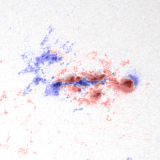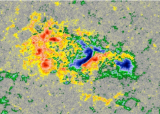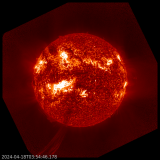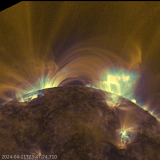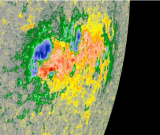Last weekend's polar lights have been witnessed by millions around the world. While many drove to dark places to watch this celestial spectacle, others grabbed a lawn chair and watched the baffling show from their own backyard. Children were woken up by their parents to watch the colours in the sky. The 10-11 May aurora certainly captured the attention and awe of the public and the media.
SIDC News
As expected, the first in a series of CMEs has arrived and unleashed its full power, resulting in an extremely severe geomagnetic storm. Further severe storming this weekend is possible. ***UPDATED (3)***
The high solar flare activity continues as NOAA 3664 has joined the party. ***UPDATED (7)***
NOAA 3663 produced its 4th and -so far- strongest X-class flare on 6 May.
Active region NOAA 3663 produced an X1.6 flare early on 3 May. Further M-class flaring can be expected from this sunspot group, with a chance on another X-class flare. ***UPDATED (2)***
The EUI instrument onboard Solar Orbiter observed the solar corona in exquisite detail once more.
An overview of the more potent geomagnetic storms that have occurred so far this solar cycle (SC25).
Solar activity has risen dramatically during the last week, with sunspot numbers near their highest levels so far this solar cycle and an average of 2 to 3 M-class flares during almost every day.
A spectacular eruption took place on the Sun's farside on 11 April. The associated coronal mass ejection was not earth-directed.
On 8 April 2024, a large part of the United States and Mexico will experience a total solar eclipse. Also at the STCE in Belgium, all eyes will be on the Sun. Three satellite instrument teams are preparing for unique, yet complementary, eclipse observations.
Active region NOAA 13615 was one of the larger sunspot groups so far this solar cycle. During its transit, it produced 1 X-class flare and 43 M-class flares, the latter is an exceptionally high number.
NOAA 3615 produced its first X-class flare late on 28 March. ***UPDATE: The associated CME has no earth-directed component.***


